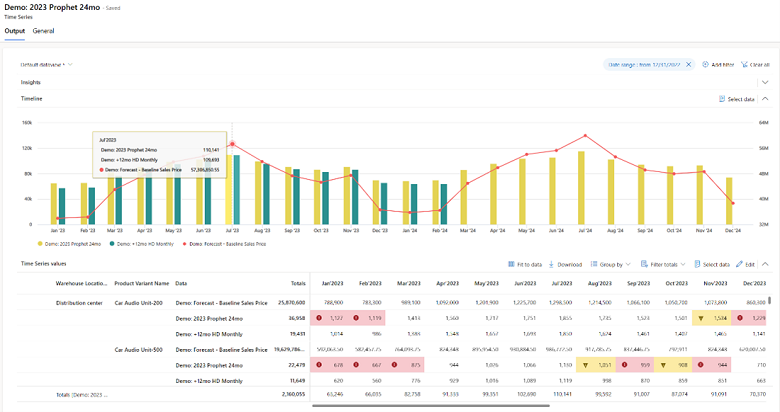Forecast with intelligence for validated demand plans
Important
This content is archived and is not being updated. For the latest documentation, go to What's new or changed in Dynamics 365 Supply Chain Management. For the latest release plans, go to Dynamics 365, Power Platform, and Cloud for Industry release plans.
| Enabled for | Public preview | General availability |
|---|---|---|
| Users by admins, makers, or analysts |  Oct 31, 2023
Oct 31, 2023 |
 Apr 1, 2024
Apr 1, 2024 |
Business value
Inaccurate forecasts can lead to lost revenue and inefficiency in the supply chain, but providing forecasts infused with intelligence will lead to more accurate and effective demand plans. The direct impact can be measured in improved revenue and fewer stockouts. Operating expenses are reduced in supply chains that require fewer fire drills.
Feature details
This is Microsoft’s next-generation collaborative demand-planning solution for Dynamics 365 Supply Chain Management, powered by best-in-class forecasting algorithms and models, and offering immersive user experiences, intelligent reports, and analytics. It empowers organizations to build an agile, resilient, and sustainable demand-planning practice fueled by intelligence and collaboration. It offers:
A no-code approach to demand modeling and planning configuration. Flexible building blocks enable the vast majority (over 85 percent) of demand planners who are not data scientists to do what-if planning and analyze, optimize, and compare scenarios in minutes.
Seamless, on-the-fly aggregation and disaggregation, which enable planners to edit forecasts on a corporate or product-group level, then zoom in and instantly see the impact on the regional and stock keeping unit (SKU) level.
Improved forecast accuracy with automatic AI parameter tuning, which helps ensure accurate forecasting and preprocessing. External signals enable superior forecast accuracy by considering promotions or stockouts.
Disruption readiness with interactive and fast what-if analysis. Version history allows tracking, evaluating forecast changes, and using the lessons learned to improve the decision-making process.
Effective collaboration throughout the planning cycle made possible by Microsoft Teams in-context communication, in-product commenting, and restorable versions of forecast values throughout the planning process.
Increased agility through integrated planning and execution flow with native integration to Supply Chain Management, customizable worksheets, and exception-based planning.

See also
Demand planning home page (docs)
Demand planning process (learn)